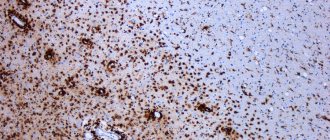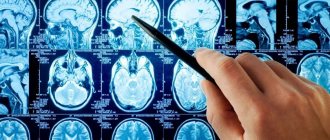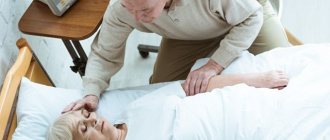In the last part, we talked about what circadian rhythms are, what genes provide them, and how mutations in these circadian genes can affect health. Well, sleep disturbances cannot but affect the course of circadian rhythms. Of course, sleep disorders do not occur on their own. These are almost always manifestations of some other painful processes in the body. Such processes may include problems with internal organs and cognitive impairment. At the same time, a number of diseases often observed with sleep problems are also detected in older people. Coincidence? Not at all necessary.
Aging and longevity
A series of articles conceived as part of the “biomolecules” special project for the Science for Life Extension Foundation.
In this series, we will consider the general problems of aging of cells and organisms, scientific approaches to longevity and prolongation of healthy life, the connection between sleep and aging, nutrition and life expectancy (let’s turn to nutrigenomics), we will talk about organisms with negligible aging, we will cover the topics of (epi)genetics of aging and suspended animation
Of course, the phenomenon of aging is so complex that it is too early to talk about radical successes in the fight against it or even a clear understanding of its causes and mechanisms. But we will try to select the most interesting and serious information about the discovered connections, model objects, developed and already available technologies for the correction of age-related disorders.
A brief summary of the special project is highlighted in the video “To grow old or not to grow old? // Everything is like animals.” You will learn more from our articles.
Stay tuned!
Circadian rhythms, and with them sleep, can be disrupted in anyone. It’s enough to stay late at the computer or fly a couple of thousand kilometers from east to west (or vice versa). A little earlier we talked about how mutations in the “internal clock genes” (and therefore sleep disturbances) lead to metabolic problems and, ultimately, can cause a variety of diseases. Interestingly, older people experience both sleep disorders and metabolic disorders at the same time. Most likely, this is somehow connected.
How much sleep do you need
The optimal duration of night's rest is purely individual for each person. For some, 7 hours is enough for complete recovery; for others, 10 is not enough. And yet there are norms for each age group. With their help, it is easy to determine whether a person is sleeping enough:
- Babies in the womb and newborns rest for 17 hours. And that's okay. During rest, their brain and body grow and develop.
- In babies 3-11 months old, sleep is gradually reduced to 12-15 hours.
- Preschoolers sleep a little less (10-13 hours).
- Teenagers need 8-10 hours of rest at night. Young people 17-18 years old - 7-9 hours.
- Adults should sleep approximately the same amount (7-9 hours).
- Rest for pensioners is usually reduced by 1-2 hours, and this is also normal.
Truths and myths about sleep for older people
Older people often experience daytime sleepiness and are therefore considered to have trouble sleeping at night. However, a study of two groups (the first of 30 men and women with an average age of 25 years, the second of 23 with an average age of 83 years) showed that older people only think that they experience drowsiness more often and more strongly than younger people [1].
Participants took a test to determine the frequency of periods of latent sleepiness during the day (Multiple Sleep Latency Test). This technique is aimed at identifying increased daytime sleepiness, and testing is required to be carried out during daylight hours. Over the course of a whole day, the subject is asked to fall asleep on a bed in a darkened room 5 times. This task needs to be completed in 20 minutes. If the subject managed to fall asleep, then after 15 minutes of sleep he is woken up and asked to leave the room for two hours. If after twenty minutes you have not been able to fall asleep, you still need to leave the room and enter it after two hours. During each attempt, an electroencephalogram and electrocardiogram are taken from the study participant, and breathing and heart rate are also measured. Such a comprehensive (polysomnographic) analysis allows us to determine how long it took a person to fall asleep and what stage of sleep he was in during the next attempt.
The results for the older group were unexpected. During the test, they fell asleep as often and as quickly as the younger ones. True, the older participants themselves seemed to fall asleep faster. It turns out that 80-90 year olds experience drowsiness no more often than younger people, even if they themselves think otherwise.
Sleepiness is not the only parameter of sleep and wakefulness, and the fact that older people are no more sleepy than their grandchildren does not mean that there is no difference between the sleep of these two age categories. There are certainly differences in normal circadian rhythms between the young and the elderly. For example, in one study, two groups of healthy volunteers (18–32 years old and 60–75 years old) slept at home for a week but spent most of the day in the laboratory. Every day, the subjects noted the time when they went to bed and when they woke up. In addition, once every hour and a half, study participants had their body temperature measured, as well as the levels of cortisol and 6-sulfatoxymelatonin in their urine. Cortisol is often called the stress hormone, as it is especially released during difficult life situations. However, the intensity of its production varies throughout the day even in good conditions for the body. Most cortisol is produced in the morning immediately after waking up - at 8–9 o’clock. During the day, its level in the blood gradually decreases, although unevenly: after eating, cortisol levels temporarily increase, but not as much as in the morning. 6-sulfatoxymelatonin is a metabolic product of melatonin, the main “circadian hormone”, which is most produced in the morning shortly before waking up. By diurnal changes in the concentrations of these two hormones, one can track the course of circadian rhythms in humans (Fig. 1)
Figure 1. Daily fluctuations in the concentrations of melatonin, cortisol and somatotropin. The horizontal axis shows the time of day, and the vertical axis shows the concentration of the hormone in mg/dL (deciliter, 100 ml).
www.usdbiology.com
It turned out that young subjects go to bed later, but fall asleep faster. It takes them approximately 45 minutes to fall asleep, versus the typical 95 minutes for older adults [2]. Older people sleep on average two hours less. The peak concentration of 6-sulfatoxymelatonin and cortisol in the urine in representatives of the older age group occurs earlier in the day than in younger people. However, the correlation between changes in the levels of these two hormones and the time of waking up and falling asleep in people 60–75 years old is slightly weaker than in people 18–32 years old. It turns out that in older people, the time of sleep and wakefulness shifts somewhat relative to circadian rhythms.
It is known that not only the total duration of sleep is important, but also what phases of sleep are completed during the night. Conventionally, sleep can be divided into two phases, which replace each other several times throughout the night:
- REM sleep (fast wave, paradoxical, stage of rapid eye movements - REM, rapid eye movement - REM);
- slow (non-REM sleep; divided into four stages: falling asleep, shallow sleep, deep sleep, delta sleep).
The phases differ from each other in the frequency of the electrical signal waves visible on the electroencephalogram (EEG), as well as the degree of muscle tension and the presence or absence of rapid eye movements. Both REM and non-REM sleep are important for normal well-being. Animals that were constantly artificially deprived of one of these two phases of sleep lived extremely short lives.
With age, the duration of the REM phase relative to the total sleep time decreases [3], and the proportion of the first and second stages of the non-REM phase from the total sleep time increases [4]. But the relative duration of the fourth stage, delta sleep, decreases.
REM sleep is traditionally associated with dreaming. Since the proportion of this sleep phase decreases in the elderly, the ability to remember one’s dreams should also decrease with age. In addition, dreams can be associated with autobiographical memory, and it, like other types of memory, deteriorates in old age. Both of these assumptions are confirmed by an online survey of 28,888 volunteers aged 10 to 79 years [5].
At the third stage of the non-REM sleep phase, the sigma rhythm , its second name is sleep spindles . EEG studies show that in elderly people the frequency and amplitude of sleep spindles recorded by electrodes over the frontal lobes of the cortex are reduced compared to similar indicators in young people [6]. For each EEG lead (electrode), you can build a graph of changes in the frequency of occurrence and amplitude of sleep spindles, and use it to judge the progress of aging. Probably, knowing the age-related dynamics of sleep spindles in a particular person, in the future it will be possible to identify metabolic and intellectual pathologies in him at an early stage.
Helpful Tips: How to Benefit from a Night's Sleep
Regardless of whether a man or woman has a disturbed sleep structure, or how much a person sleeps, if he does it incorrectly, then rest will not give the desired result. To improve its quality, you need to follow the following recommendations from experts:
- Stick to a bedtime schedule. It is better to go to bed no later than 11 pm. At the same time, it is advisable to wake up no earlier than 7 am (this indicator varies from person to person).
- Before going to bed, you need to ventilate the room. The temperature in the bedroom should not exceed 22 degrees. To improve your sleep quality, you can take an evening walk in the fresh air.
- A few hours before rest, you should not eat food that requires a long digestion time. As a last resort, you can drink a glass of warm milk.
- Night rest should include the period after midnight to 5 am.
- Drinking coffee, strong tea or alcohol in the evening is strictly prohibited.
- If a person has difficulty falling asleep, he can drink tea using soothing herbs (motherwort, valerian), or take a relaxing bath with sea salt. Aromatherapy often helps you fall asleep.
- It is important to choose a comfortable resting position.
- Preference should be given to orthopedic devices for rest. The mattress should be flat and hard. Do not use a high headboard.
- The room should be quiet and dark at night.
- After waking up, it is better to take a contrast shower or do light exercises.
A proper night's rest, respecting its structure, is the key to good health and well-being. A person wakes up rested, productive, and in a great mood. Systematic lack of sleep will lead to serious impairments in the functionality of the body, which are not easy to get rid of.
Age-related physiological changes in sleep and metabolism, as well as their disorders
Let's consider the changes in sleep physiology that manifest themselves in old age in any person without noticeable health problems. Of course, hormones and neurotransmitters, including those that are rarely heard, are involved in regulating the state of the body. Here is their list.
- With age, the production of orexins, neuropeptides secreted by a number of hypothalamic cells, weakens (the fact is that these cells die over time). Orexins maintain a state of wakefulness, and a significant lack of orexin leads to narcolepsy - sudden attacks of irresistible sleepiness during the day. Apparently, one of the reasons why the quality of sleep in older people is worse than in younger people is lower levels of orexin [7]. The quality of sleep decreases because orexin does not simply prevent a person from falling asleep. It softens the transition between sleep and wakefulness and, one might say, makes it smoother and more predictable [8]. Agree, understanding when you fall asleep is somehow more pleasant than “switching off” suddenly or rolling your head on the pillow, waiting for Morpheus to come.
- Adenosine is one of the non-classical mediators that cause drowsiness. Adenosine is, in fact, part of the molecule of the “universal energy currency of the cell” - ATP, only without phosphate ions and without energy-rich chemical bonds. The longer a person did not sleep, the more energy he spent, and the higher the concentration of adenosine in his blood became. You can artificially reduce the sensitivity of cells to adenosine and temporarily banish fatigue by taking its receptor antagonist, caffeine. With age, in the cerebral cortex, the balance of activity of enzymes that help synthesize adenosine and enzymes that help convert it into the form of adenosine phosphates changes: the former begin to work significantly more than the latter. Because of this, adenosine levels in the brain increase. This is probably why older people more often feel sleepy, albeit “fake” [9]. If we consider age-related changes in sleep not at the level of cells and hormones, but more globally, this is what is discovered. With age, nighttime sleep becomes fragmented, a person wakes up frequently, so the overall quality of sleep decreases, even if you go to bed for a short time during the day [10]. In fact, this is a manifestation of nighttime insomnia. Insomnia is common in older people, but increasing age alone does not increase its likelihood. It is increased by the following risk factors: depression (especially often occurs after 65), death of a spouse, retirement, onset of dementia (about dementia, see the next section). Also, the manifestations of insomnia are enhanced by alcohol and medications often used by older people: antidepressants, carbidopa and levodopa (they are prescribed for the treatment of parkinsonism), adrenaline beta blockers (for heart disease; can cause nightmares) and corticosteroids [11].
- With insomnia and fragmented sleep, glucose metabolism may be impaired. It occurs because the concentrations of ghrelin and leptin, the “saturation hormones,” change [12], and the sensitivity of cells to the most important “glucose hormone”—insulin—changes (by the way, it also depends on circadian rhythms). Regardless of total sleep time, in people of the same age, a greater proportion of slow-wave sleep is correlated with lower body weight and a lower risk of obesity [13].
Periodic limb movements during slow-wave sleep have been linked to an increased risk of heart disease and stroke. It is only important to understand that this connection is qualitative, not quantitative. For example, it is impossible to predict by the intensity of limb movements during sleep how quickly and with what probability a person will have a stroke, because the latter can be not only a consequence of sleep pathology, but also its cause [14].
Often, health problems manifest themselves as breathing disorders during sleep: snoring, sleep apnea, etc. They appear as a consequence of disruption of the neurons of the bridge. The pons is a region of the brain where one of the “wakefulness centers” is located - the reticular formation , a collection of neurons that maintain the body’s activity in good shape, at the level of wakefulness. Not far from them is the respiratory center. Therefore, if there are problems with one group of nerve cells, the second one often suffers. Fortunately, the vast majority of patients with such problems do not experience serious breathing problems while they are awake [15].
Deep phase compensation
Often people who do not have a stable schedule think like this: “Today I’ll work late, and tomorrow I’ll get a good night’s sleep.” If you wake up earlier in the morning, you will create a deficit of REM sleep, which can actually be compensated for with a 20-30 minute rest at lunch or the next night. However, such tricks will not work with the slow phase, because our rest begins with it.
Lack of deep sleep gradually accumulates in the body, which negatively affects a person’s ability to work. However, there are other, more serious problems that you may face with chronic sleep deprivation.
First of all, the endocrine system malfunctions, growth hormone ceases to be produced, which causes a person’s belly to suddenly increase in size. Tissues and organs also stop renewing normally. Lack of sleep is a catalyst for aging. Immunity drops sharply, chronic diseases worsen, and the risk of viral, fungal and bacterial infections appears.
From here only one conclusion follows: it is unrealistic to sleep through the slow phase on subsequent nights or to “sleep” it in advance; the normal functioning of the body can only be maintained by observing a strict schedule of rest and wakefulness.
Sleep and intelligence decline in old age
Sleeping is also important because during the slow-wave and REM stages of sleep, memory consolidation —the transfer of information from short-term memory to long-term memory [16]. The hippocampus plays a key role in this process. The information that a person received while awake is “played out” several times during sleep in the form of a sequence of electrical impulses in the cells of the hippocampus, and then transmitted to the cerebral cortex (mainly the prefrontal cortex), where it remains for long-term storage. The transfer of information from the hippocampus to the prefrontal cortex during sleep is facilitated because the concentrations of cortisol and acetylcholine [17] (substances that inhibit memory consolidation) in the brain are reduced (Fig. 2).
Figure 2. Age-related changes in the activity of signaling from the hippocampus to the cerebral cortex during sleep. As we age, the proportion of slow-wave oscillations in total sleep time decreases, the prefrontal cortex gradually degrades, cortisol levels increase and acetylcholine concentrations decrease.
[18]
In old age, the process of memory consolidation occurs with less intensity [18] due to three features that were already mentioned above:
- the share of delta sleep in total sleep time decreases;
- cortisol production increases;
- The structure of the prefrontal cortex changes, its volume becomes smaller with age.
However, in older people who do not suffer from serious mental and intellectual impairments, sleep is no less important for memory consolidation than for young people. For example, both of these categories of people perform the task of remembering the location of objects better after sleep. The same cannot be said for older people with cognitive problems [19].
With motor memory the situation is somewhat different. Even in healthy older adults, sleep does not improve recall of a recently learned motor skill [20]. The exact reasons for this are unknown. Perhaps the fact is that in old age, memorizing sequences of movements deteriorates in any case, and against the background of this deterioration, the “help” of sleep in the memorization processes is not noticeable.
Cycles
An adult's sleep is divided into 2 phases: fast and slow. One sleep can be divided into several cycles lasting about 1.5 hours. The cycle consists of 2 main phases:
- REM sleep phase. It is characterized by rapid brain activity, increased blood pressure, body temperature, and accelerated heart rate. Information is processed in the cerebral cortex, processes on which memorization depends are actively taking place.
- Slow phase. The activation of restoration processes, the production of growth hormone, and the strengthening of the immune system depend on it. The brain is in a state of rest.
Neurodegenerative diseases and sleep
The most common neurodegenerative diseases are Alzheimer's disease [21], [22] and Parkinson's disease. Unfortunately, their fame is sad. In Alzheimer's disease, beta-amyloid plaques accumulate in neurons, and in Parkinson's disease, Lewy bodies (alpha-synuclein) are formed in neurons. The amount of amyloid in this case correlates with sleep quality in healthy people aged 60–65 years [23]. However, it is not a fact that sleep disturbances occur due to the increased content of this protein in neurons. The opposite has also not been proven: there is no reason to claim that lack of sleep provokes Alzheimer's disease. However, sleep disturbances can potentially help diagnose Alzheimer's disease at an early stage. This is also supported by the fact that as the symptoms of this dementia intensify, the severity of sleep disorders increases (the same applies to dementia with Lewy bodies - a disease that resembles Parkinson's disease in some symptoms, and Alzheimer's disease in some others.) In addition, despite frequent naps; in patients with Alzheimer's dementia, sleep duration is significantly reduced [24].
In Parkinson's disease, sleep becomes interrupted, the REM sleep phase is disrupted, the frequency of sleep spindles and the duration of slow-wave sleep decreases, and diurnal fluctuations in cortisol levels are smoothed out. It turns out that in Parkinson's patients, sleep and wakefulness are not clearly divided into periods, the boundaries between them are to some extent blurred.
In Huntington's chorea, sleep and wakefulness are fragmented [25]. A person is active at night and falls asleep late. He has a reduced proportion of REM sleep, an increased frequency of sleep spindles, and during stage 1 non-REM sleep, chorea can be observed - chaotic uncontrolled movements of the limbs, the main manifestation of this disease during wakefulness.
With ALS (amyotrophic lateral sclerosis), breathing disorders occur during sleep. REM sleep becomes intermittent, and the proportion of slow-wave sleep decreases. In addition, the course of daily fluctuations in cortisol is disrupted.
Interestingly, the manifestation of almost all of the above sleep disorders can be weakened with the help of phototherapy (periodic exposure to bright light) and organized (not uncontrolled!) melatonin intake.
Table 1. Summary table of associations of the most common sleep disorders with neurodegenerative diseases.
| Age-related degeneration | Alzheimer's disease | Parkinson's disease | Huntington's chorea | Amyotrophic lateral sclerosis | |
| Which neurons and structures are damaged? | Basal forebrain, locus coeruleus, cerebral cortex, dopaminergic neurons, orexin neurons, acetylcholine receptors | Basal forebrain, cerebral cortex, cholinergic neurons | Substantia nigra, dopaminergic neurons, orexinergic neurons | Basal ganglia, dopaminergic neurons | Motor neurons of the motor cortex, spinal cord and brain stem. Accompanied by a decrease in the activity of neurons that secrete serotonin |
| Sleep disorders | Fragmented sleep and wakefulness, out of phase with normal circadian rhythms, increased daytime sleepiness | Reduced total sleep time | Fragmented sleep, behavioral disturbances during REM sleep (moving limbs, making sounds) | Sleep and wakefulness are fragmented, the proportion of REM sleep is reduced | Breathing disorders during sleep, insomnia. The degree of deterioration in sleep quality corresponds to the severity of other manifestations of the disease |
| Signs of probable violations | Disturbance of the melatonin system of the brain | The order and timing of REM sleep | REM sleep behavior disorder | Many sleepy spindles | Various sleep disturbances (a likely sign of sleep apnea) |
| Circadian rhythm disorders | Peak and trough episodes are out of phase relative to normal circadian rhythms | Disturbances of the melatonin system and diurnal changes in core body temperature | Shift in periods of greatest and least activity, smoothed daily changes in cortisol concentration (peaks become lower and less pronounced) | Falling asleep is shifted to a later time, at night the patient shows increased activity compared to peers | Daily fluctuations in cortisol levels do not correspond to the normal rhythm |
| Non-REM sleep | Short slow-wave sleep | Short slow-wave sleep, few sleep spindles | Short slow-wave sleep, few sleep spindles | At the first, extended stage of sleep, chorea is observed. Many sleepy spindles | Short slow-wave sleep |
| REM sleep | Shortened REM sleep | Shortened REM sleep, increased activity of inducible NO synthase | REM sleep behavior disorder, symptoms of REM sleep appear during non-REM sleep | Shortened REM sleep, difficulty transitioning into it from non-REM sleep | Breathing disorders, short and fragmented REM sleep |
| Wakefulness | Fragmented wakefulness, frequent episodes of dozing, increased daytime sleepiness | Fragmented wakefulness, frequent episodes of dozing | Increased daytime sleepiness | Some studies indicate disturbances in awakening, but deviations from healthy peers in patients are insignificant | Increased daytime sleepiness |
| Treatment options for disorders | Phototherapy | Phototherapy, exercise, orexin/hypocretin receptor antagonists (used in mice) | Phototherapy | Setting the circadian rhythm by eating according to a clear schedule, alprazolam (restores circadian rhythms and slows down the decline in intelligence) | Melatonin preparations, mechanical ventilation (CPAP) |
Physiology of the sleep process
Healthy sleep can last from 4 to 8 hours. However, these indicators are quite subjective, since the duration of sleep depends on the person’s physical fatigue. A significant amount of work done during the day may require a longer night's rest. Normal sleep is cyclical and is required by the human body at least once a day. Sleep cycles are called circadian rhythms. Every 24 hours, circadian rhythms are redefined. Light is considered the most important factor in sleep. The concentration of photodependent proteins in the body depends on its natural cycle. Typically, the circadian cycle is related to the length of daylight hours. Just before sleep occurs, a person feels drowsy, his brain activity decreases, and there is also a change in consciousness. In addition, a person who is in a sleepy state experiences a decrease in sensory sensitivity, a decrease in heart rate, yawning, and also a decrease in the secretory function of the lacrimal and salivary glands. Another physiological feature of sleep is a process called “vegetative storm”, i.e. when various forms of arrhythmias are observed, an increase or decrease in blood pressure, increased blood supply to the brain and secretion of the adrenal glands, erection of the clitoris and penis.
Possible violations
Disturbances in the deep sleep phase occur due to various circumstances. If similar problems appeared several times, but everything has stabilized, there is no need to worry. In case of systematic such violations, it is recommended to consult a somnologist and find the cause of this phenomenon.
Basically, violations appear as a result of:
- psychological abnormalities, numerous stresses and experiences received during the day;
- the presence of diseases that are accompanied by painful sensations in the body and interfere with sleep;
- the presence of diseases that force you to get out of bed often - diarrhea, frequent urination, etc.;
- the presence of a fear of sleep and similar problems that are associated with the fear of falling asleep.
the production of insulin in the pancreas is disrupted and diabetes mellitus develops; leptin productivity decreases and obesity develops; the immune system is weakened and the body is exposed to diseases; the risk of cancer formation increases; atherosclerosis develops and attention decreases; irritability increases and unreasonable aggression is observed; depressive state increases
To restore normal duration and get rid of possible consequences, somnologists recommend:
- perform cycles of rest and wakefulness at the same time;
- regular physical exercise, but not before bed;
- frequent walks in nature in the evening and airing the bedroom;
- do not eat food 3 hours before going to bed, as well as do not drink alcoholic beverages;
- do not sit at the computer and do not watch films that irritate the psyche - action films, horror films, thrillers, etc.;
- create a pleasant atmosphere in the room.
As a result, normal relaxation is important for the body and its duration should be observed, and if there are violations, they should be eliminated.











